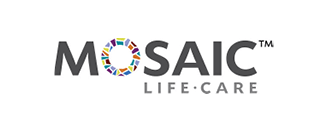AbbVie’s Humira monopoly is nearing its end.
No monopoly in the history of the pharmaceutical industry has been as successful as AbbVie’s Humira. The injectable drug, manufactured by the spin-off of Abbott Laboratories, is used to treat a wide variety of inflammatory diseases including rheumatoid arthritis, ulcerative colitis, and Crohn’s disease, and is the most widely dispensed specialty drug in the country.
This year, AbbVie’s patent for Humira is up, and this past January the first copycat version from Amgen launched in the U.S.[1] Over the course of this year, a total of ten new Humira biosimilars are set to hit the market.

Understanding which Humira generics are interchangeable will be a crucial part of the pharmacist’s role in prescribing.
Biosimilars, unlike bioidenticals, have slightly different structures than the originator biologics but have the same effect in treating a disease.[2] How these Humira biosimilars perform will be crucial information for prescribers and pharmacists because biosimilars can have differences in formulation. Humira generics labeled as “interchangeable” by the FDA will allow pharmacists to “choose the biosimilar over Humira when filling prescriptions, rather than requiring the prescribing doctor to specify one.” [1]
As Ryan Haumschild, PharmD, director of pharmaceutical services at Emory University Hospital Midtown in Atlanta iterates, “Pharmacists play an extremely valuable role in biosimilars—in communications about these drugs with both physicians and patients.
It’s important for pharmacists to familiarize themselves with the differences when these biosimilars reach the market so they can be more informed when they are counseling patients and recommending these therapies to physicians.”[3]
While Humira has indications that span rheumatology, dermatology, gastroenterology, and ophthalmology, not all of its biosimilars will be indicated for all the same conditions.
The ten Humira biosimilars also differ from one another in their interchangeability designations, and there are both low and high-concentration options as well as citrate-free and citrate formulations.
Are there benefits for patients?
According to a recent article on Helio.com, the initial wave of Humira generics hitting the market is not likely to make a difference to patients, or at least not immediately, according to Stephen B. Hanauer, MD, medical director of the Digestive Health Center at Northwestern Medicine and professor of medicine at the Feinberg School of Medicine. He explained, “Patients with commercial insurance now pay around $5 a month for Humira. I can’t imagine the pricing of biosimilars competing with that.” However, the article goes on to say, “for those without insurance, the out-of-pocket cost for a month’s worth of Humira can be as high as $7,000. According to Hanauer, this is where newly available biosimilars may make a difference. ‘They could have more options at a lesser cost,’ he said. ‘Those who fall into the donut hole of Medicare may also have a lower cost.'”[4]
That said, biosimilars with the interchangeability designation can be beneficial to payers as they eliminate the need for another prescription. An interchangeable biosimilar can be automatically substituted for Humira at the pharmacy.
As we learn more, we’ll share more.
We’re eagerly anticipating the rollout of all of the Humira biosimilars and will share more information with you as each one hits the market. In the meantime, click here for more information about how VPL can help your specialty pharmacy safely distribute the new Humira biosimilars to patient homes.






























